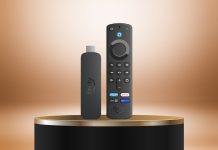As the world shifts towards more sustainable transportation solutions, the Philippines finds itself at a crossroads. The buzz around electric vehicles (EVs) has been growing, and for good reason. These eco-friendly alternatives to traditional combustion engine vehicles promise a cleaner, greener future for our roads. But how exactly is the EV revolution unfolding in the Pearl of the Orient Seas? Let’s take a closer look at the current state of EV adoption in the Philippines and explore the unique challenges and opportunities that come with it.
A Slow But Steady Start
The journey of electric vehicles in the Philippines has been a gradual one. Unlike some of our Southeast Asian neighbors who have eagerly embraced this technology, the Philippines has been taking cautious steps toward EV adoption. This measured approach isn’t necessarily a bad thing; it allows us to learn from the experiences of other countries and potentially avoid some of the pitfalls they’ve encountered.
In recent years, there’s been a noticeable increase in interest from both consumers and manufacturers. More EV models are becoming available in the local market, ranging from compact city cars to luxury vehicles. This diversity is crucial, as it caters to different segments of the population and their varying needs.
However, it’s important to note that the majority of EVs on Philippine roads are still primarily found in urban areas, particularly in Metro Manila and other major cities. This concentration is largely due to the current limitations in charging infrastructure, which we’ll discuss in more detail later.
Government Support: A Key Driver
One of the most significant factors in the adoption of any new technology is government support, and EVs are no exception. The Philippine government has recognized the potential of electric vehicles to address various issues, including air pollution, energy security, and economic development.
In recent years, there have been several initiatives aimed at promoting EV adoption. These include tax incentives for EV manufacturers and importers, as well as plans to integrate electric vehicles into public transportation systems. The Department of Energy has also been working on developing a comprehensive roadmap for EV adoption in the country.
While these efforts are commendable, many industry observers believe that more can be done. Compared to some of our Southeast Asian neighbors, the Philippines’ EV policies are still in their infancy. There’s a need for more concrete and aggressive measures to truly jumpstart the EV revolution in the country.
The Charging Conundrum
One of the biggest hurdles in EV adoption in the Philippines is the lack of a comprehensive charging infrastructure. For many potential EV owners, the fear of running out of charge – often referred to as “range anxiety” – is a significant deterrent.
Currently, most EV charging stations are concentrated in select areas of Metro Manila and other major urban centers. This limited availability makes it challenging for EV owners to plan long-distance trips or even consider EVs as a viable option if they live outside these areas.
The good news is that both private companies and government agencies are working to address this issue. There are ongoing projects to install more charging stations across the country, including in shopping malls, parking lots, and along major highways. However, the pace of this expansion needs to accelerate to keep up with the growing number of EVs on the road.
It’s worth noting that home charging remains the primary method for most EV owners in the Philippines. This works well for those with access to private parking spaces but presents a challenge for the many Filipinos living in apartments or condominiums without dedicated parking.
The Cost Factor: A Major Consideration
Let’s face it – for many Filipinos, the decision to buy a vehicle often boils down to cost. And this is where electric vehicles face one of their biggest challenges in the Philippine market.
The initial purchase price of an EV is generally higher than that of a comparable gasoline-powered vehicle. This price difference can be substantial, often putting EVs out of reach for the average Filipino consumer. However, it’s crucial to consider the total cost of ownership over the vehicle’s lifetime.
EVs typically have lower maintenance costs due to their simpler mechanical structure. They also have lower “fuel” costs, as electricity is generally cheaper than gasoline on a per-kilometer basis. Over time, these savings can offset the higher initial purchase price.
The challenge lies in educating consumers about these long-term benefits and providing financing options that make EVs more accessible. Some banks and financial institutions have started offering special loan packages for EV purchases, but more needs to be done to make these eco-friendly vehicles a realistic option for a broader segment of the population.
Electric Vehicles in Philippine Weather: Thriving in Tropical Conditions
One unique aspect of EV adoption in the Philippines that deserves special attention is our tropical climate. Electric vehicles in Philippine weather might raise some eyebrows, as many wonder how these high-tech vehicles fare in our hot and humid conditions.
Contrary to some misconceptions, modern EVs are well-equipped to handle tropical weather. They often perform better than traditional vehicles in some aspects. For instance, EVs don’t have the same overheating issues that combustion engines sometimes face in hot weather.
However, there are some considerations to keep in mind. The high temperatures can affect battery performance and longevity if not properly managed. Most modern EVs come with advanced thermal management systems that help regulate battery temperature, but it’s still important for owners to park in shaded areas when possible and avoid leaving the vehicle in direct sunlight for extended periods.
The Philippines’ propensity for heavy rainfall and flooding also presents unique challenges. While EVs are generally well-sealed and can handle wet conditions, owners need to be cautious about driving through deep water, just as they would with a traditional vehicle.
On the flip side, our tropical climate offers some advantages for EV owners. The consistent temperature throughout the year means that EV range doesn’t fluctuate as much as it does in countries with extreme seasonal changes. Additionally, our abundant sunshine makes the Philippines an ideal candidate for solar-powered charging stations, which could help address the infrastructure challenges while promoting renewable energy use.
The Role of Public Transportation
When discussing EV adoption in the Philippines, it’s crucial to consider the role of public transportation. Given the country’s high population density and the challenges of traffic congestion in urban areas, electrifying public transport could have a significant impact on overall emissions reduction and air quality improvement.
There have been pilot projects introducing electric buses and jeepneys in some areas, particularly in Metro Manila. These initiatives have shown promise, demonstrating the potential for electric public transportation to operate effectively in the Philippine context.
However, the transition faces several hurdles. The high upfront costs of electric buses and the need to retrain drivers and maintenance staff are significant challenges. Additionally, the iconic jeepney, a symbol of Philippine culture, presents a unique opportunity for electrification but also requires careful planning to balance tradition with technological advancement.
The success of electric public transportation could play a crucial role in familiarizing the general public with EV technology and demonstrating its benefits on a larger scale. It could also help in the development of charging infrastructure that could benefit private EV owners as well.
Consumer Awareness and Education
One often overlooked aspect of EV adoption is the need for consumer awareness and education. Many Filipinos are still unfamiliar with electric vehicle technology, its benefits, and what owning an EV entails.
There’s a need for more comprehensive public information campaigns to dispel myths about EVs and provide accurate information about their performance, cost, and environmental benefits. This education should extend beyond potential car buyers to include mechanics, car dealerships, and even traffic enforcers, all of whom will need to adapt to the presence of EVs on our roads.
Some car manufacturers and EV advocacy groups have been organizing events and test drive experiences to give people firsthand experience with electric vehicles. These initiatives are crucial in building public trust and interest in EV technology.
The Local EV Industry: Opportunities for Growth
While much of the focus on EV adoption centers around imported vehicles, there’s also potential for the development of a local EV industry in the Philippines. This could include the manufacturing of EVs or their components, as well as the development of charging technologies suited to local conditions.
The Philippines has a strong electronics manufacturing sector, which could potentially be leveraged for EV component production. There have also been homegrown initiatives to develop electric versions of traditional Philippine vehicles, such as electric tricycles and jeepneys.
Encouraging the growth of a local EV industry could have multiple benefits. It could create jobs, reduce the cost of EVs through local production, and allow for the development of vehicles specifically designed for Philippine conditions and needs.
Environmental Impact: A Crucial Consideration
One of the primary drivers of EV adoption globally is the potential for reducing greenhouse gas emissions and improving air quality. This is particularly relevant in the Philippines, where air pollution in urban areas is a significant health concern.
However, it’s important to consider the entire lifecycle of EVs, including the source of electricity used to charge them. The Philippines still relies heavily on coal for electricity generation, which means that the environmental benefits of EVs are somewhat muted compared to countries with cleaner energy grids.
This underscores the need for a holistic approach to sustainability, where the transition to EVs is accompanied by a shift towards renewable energy sources. The good news is that the Philippines has been making strides in increasing its renewable energy capacity, which bodes well for the future environmental impact of EVs in the country.
Looking Ahead: The Road to Wider EV Adoption
As we consider the current state of EV adoption in the Philippines, it’s clear that we’re still in the early stages of this transportation revolution. However, the foundations are being laid for potentially rapid growth in the coming years.
The key to accelerating EV adoption will likely be a combination of factors: continued government support through policies and incentives, expansion of charging infrastructure, increased consumer education, and the introduction of more affordable EV models suited to the Philippine market.
It’s also crucial to consider the unique aspects of the Philippine context, from our tropical weather to our diverse transportation needs. Success will come not from blindly following global trends, but from adapting EV technology to work for our specific conditions and requirements.
As we navigate this electric future, it’s important to remember that the transition to EVs is not just about changing the types of vehicles on our roads. It’s part of a larger shift towards more sustainable and resilient cities, cleaner air, and a healthier environment for all Filipinos.
The journey towards widespread EV adoption in the Philippines may be challenging, but it’s one filled with opportunities – for innovation, for economic growth, and for a cleaner, greener future. As we continue to make progress, even if it’s at a measured pace, we’re moving towards a future where “Electric vehicles in Philippine weather” is not just a concept, but a common, everyday reality.
The road ahead may be long, but with each electric vehicle that joins our roads, we’re one step closer to a more sustainable transportation future for the Philippines. As consumers, policymakers, and industry players, we all have a role to play in shaping this electric revolution. By staying informed, being open to new technologies, and actively participating in the conversation around sustainable transportation, we can help steer the Philippines towards a cleaner, more efficient, and more sustainable automotive future.





















